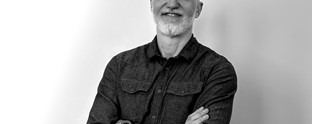Humanising your brand: A guidebook

Brian Elkins, executive director of strategy at Monigle, discusses the idea of humanising brands and how doing this can help aid a brand’s connection with its audiences.
The brands we love most are no different from the humans we love most. Those that help us grow, heal, achieve, remember and feel. We measure them not simply by what they do, but by the impact they create. They’re truthful. They’re great listeners. They go beyond the call of duty to provide value by creating meaning. Every human is a brand. And the best brands feel human.
It’s simple, but that doesn’t mean it’s easy. The merit of creating human brands is widely recognised. But the ability to build and sustain one effectively? That’s a different story.
Humanising brands to move people means showing up through different lenses internally, externally, within the industry and within society. Let’s explore what those lenses are.
Internal culture: A human brand encourages counterintuitive mindsets
- Stop thinking of a brand as a brand. A brand is made up of people – from recruitment to the call centre, from marketing to the C-suite – who come in daily to contribute to the higher purpose of the organisation. That means brand is a being, not a thing. Rather than a static, singular monolith, treat a brand as a living, breathing entity. One that’s constantly moving and improving itself.
- Redefine roles. Building human brands means redefining what we do for a living. We’re not strategists. We’re empathisers. By looking at our own contributions in a more human way, we can approach brands with the same mentality.
- Lead by serving. People don’t want to learn about a brand. They want to learn what that brand can do for them. So, how might the brand earn their care, attention and trust? Human brands don’t assume to know. They take the time to find out. Identify who the brand serves and how it can uniquely solve their problems.
External audiences: A human brand is a memorable specific, not a safe generality
- Sound like a real person. Communicate in a way that’s both authentic to the organisation and resonates with the audiences it cares about. Instead of sounding like a corporate cyborg, brands can be so much more. A human voice and messaging are the difference between “Tell me more” and “No, thanks.”
- Make experience holistic and directive. A logo is a handshake and a design system is a thoughtful conversation – one that guides the user to get up close and personal with the offer available to them and, hopefully, decide to engage. It is not enough to be beautiful. A strong visual identity moves people, emotionally and literally – drawing the user to a desired feeling and physical destination.
Industry: A human brand practices daily (knowing it never truly arrives)
- Balance reality and aspiration. A human brand is 70% authentic to where it is today and 30% aspirational in the direction it’s heading. Human brands leave room to evolve into better, stronger versions of themselves. Then, show up every day to fill those shoes.
- Keep promises. Disconnect between what a brand says and what a brand does is the surest road to trust erosion. Human brands only say they’re the “best” if they are (and can prove it). Human brands move people by making human promises – and working hard to keep them.
Society: A human brand is a bridge – between mind and heart; culture and business
- Marry logic and emotion. It’s not about the product or service delivered. It’s about how the brand makes people feel. Logic (brand truth and customer reality) is the fertile soil from which emotional connection (fulfilment, actualisation, loyalty) blooms. Data, on its own, is noise. Turn numbers, features and benefits into stories. Because when people connect, they feel – and when they feel, they act.
- Develop exceptional EQ. Is the brand built on an awareness and appreciation of current culture? Is it accessible to everyone it cares about? Consider varying abilities, identities, sexual orientations, racial and socioeconomic backgrounds. Keep in mind new universal realities. High EQ brands adapt where appropriate and nuance based on the context. They know where to lead the conversation and when to listen.
Human brands are creative enough to get counterintuitive, brave enough to be specific, humble enough to practice daily and empathetic enough to be a bridge. In doing so, they help their people and customers feel understood, connected; and therefore, inspired enough to act.












